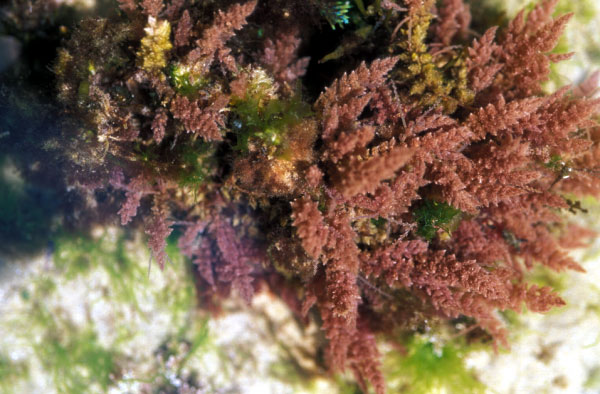Falkenbergia rufolanosa Harvey
Pale purplish-red, quickly degenerating when removed from the water and becoming distinctly orange; fronds bushy, with a cylindrical axis to1 mm wide and 200 mm long. Both phases readily reproduce vegetatively. Photographs by M.D. Guiry

Kelp waste extracts combined with acetate enhances the biofuel characteristics of Chlorella sorokiniana
To probe the effect of kelp waste extracts (KWE) combined with acetate on biochemical composition of Chlorella sorokiniana, the cultures were performed under independent/combined treatment of KWE and acetate. The results showed that high cell density and biomass were obtained by KWE combined with acetate treatments, whose biomass productivity increased by 79.69-102.57% and 20.04-35.32% compared with 3.0gL-1 acetate and KWE treatments respectively. The maximal neutral lipid per cell and lipid productivity were gained in KWE combined with 3.0gL-1 acetate treatment, which increased by 16.32% and 129.03% compared with 3.0gL-1 acetate, and 253.35% and 70.74% compared with KWE treatment. Meanwhile, C18:3n3 and C18:2n6c contents were reduced to 4.90% and 11.88%, whereas C16:0 and C18:1n9c were improved to 28.71% and 37.76%. Hence, supplementing appropriate acetate in KWE cultures is supposed to be a great potential method for large-scale cultivation of C. sorokiniana to generate biofuel.


